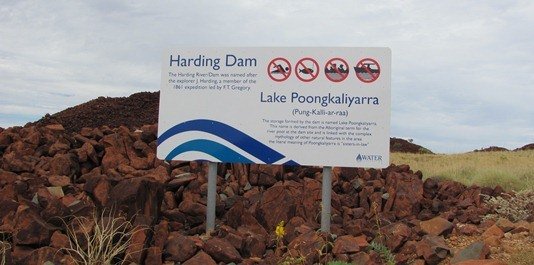
Harding Dam is located to the south of Roebourne in the Pilbara area of Western Australia and it is the water supply for the West Pilbara Water Supply Scheme. The water is piped to Roebourne, Karratha, Cossack, Point Samson and Wickham and the dam was only built in 1985. Due to the fact that the water is for human consumption there are no water based activities permitted at the dam and it is purely a nature-based day trip. It holds a maximum capacity of 64 gigalitres and is currently at 80% capacity. The capacity has varied a lot of the years and at the beginning of 2011 it was only at 20% capacity, but by February 2011 there had been substantial rainfall after Cyclone Carlos and it reached maximum capacity, which is enough for two years supply for the surrounding towns.
We have visited a few dams and they are generally not ideal birding areas due to the high water level, but as it had been almost 18 years since we had last visited Harding Dam we thought we should go and see if there had been any changes. As we approached we were pleasantly surprised by the reed beds along Waranoolar Pool and the sight of Black Swans. Despite it being a public holiday and an overcast day there were only 4 other people visiting during our time spent birding.
Harding Dam wall
We walked out onto the dam wall not expecting to see much bird-life, but were very pleasantly surprised to see several Great Crested Grebes on the water and Darters around the edge of the dam. There were Zebra Finch, Painted Finch and Star Finch taking advantage of the water supply and Nankeen Kestrels, Black Kites and Whistling Kites soared overhead. Caspian and Whiskered Terns swooped down over the water and a Blue-winged Kookaburra called out from below the dam wall as the Purple Swamphens squabbled amongst themselves.
Great Crested Grebe
A dead tree was an ideal roost for several Little Black Cormorants and Hardheads bobbed along on the water.
Little Black Cormorants
We drove up to the lookout and heard the unmistakeable screeching sound of a Western Bowerbird, which was our 318th bird for 2013! We observed it bouncing around the trees in the picnic area and no doubt it had a bower nearby.
View from the lookout of the dam and Waranoolar Pool
Waranoolar pool is filled from the overflow from the spillway and there were Black Swans and Black-fronted Dotterels present on the edge of the spillway.
Spillway and Waranoolar Pool
Black Swans on Waranoolar Pool
We drove back down from the dam wall and lookout to spend some time beside the water and see what bird-life was around and a small group of Australian Pelicans flew overhead.
Road from the dam wall to the picnic area
The edges of the pool were ideal habitat for numerous bird species and there were Eurasian Coot, Dusky Moorhen and Australasian Grebe on the water alongside the Black Swans, Pacific Black Ducks and Hardheads.
Waranoolar Pool and picnic area
We spent some time in the picnic area to see what else was about and soon had a Willie Wagtail fly across to the centre of the pool and Rainbow Bee-eaters and Sacred Kingfishers swooping for insects. The Australian Reed-warbler made its presence known with frantic calling and before long it appeared at the top of the reeds. As we scanned through the trees on the far bank we noticed that we had come across a roost for several Nankeen Night Heron and they were well-disguised in the trees.
Trees with Nankeen Night Heron in on the far bank
The Nankeen Night Heron are rather well camouflaged, so I have cropped the photograph to enable you to see where they are…..in the left hand third of the photograph
Two Nankeen Night Heron
Although dams are not always the ideal situation for birds, due to the depth of the water and lack of food, this area has a plentiful supply of bird-life and we observed over 40 species of birds in our short visit.


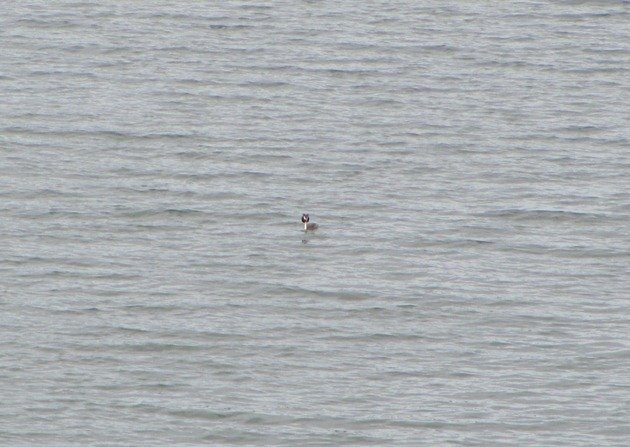
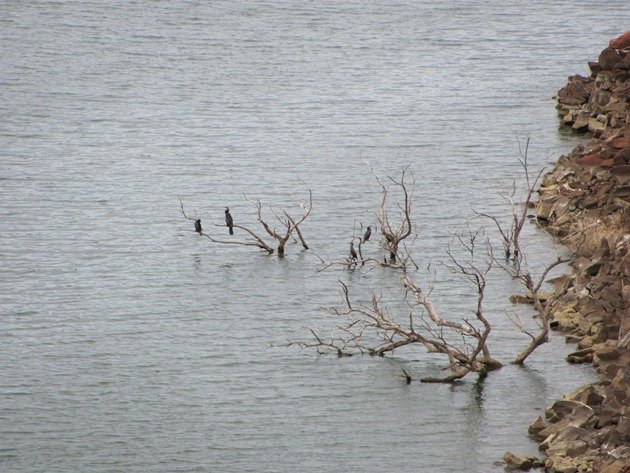
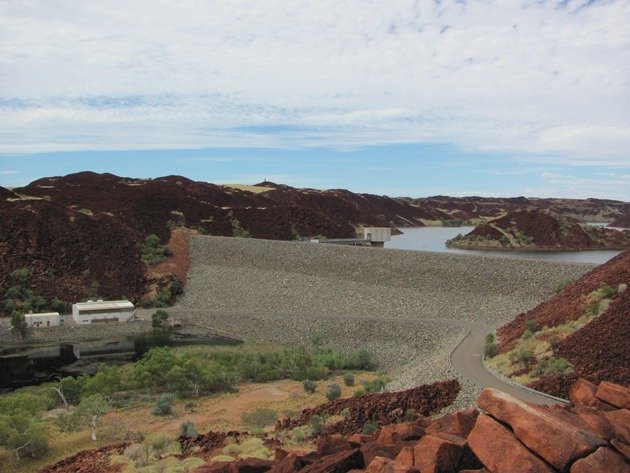
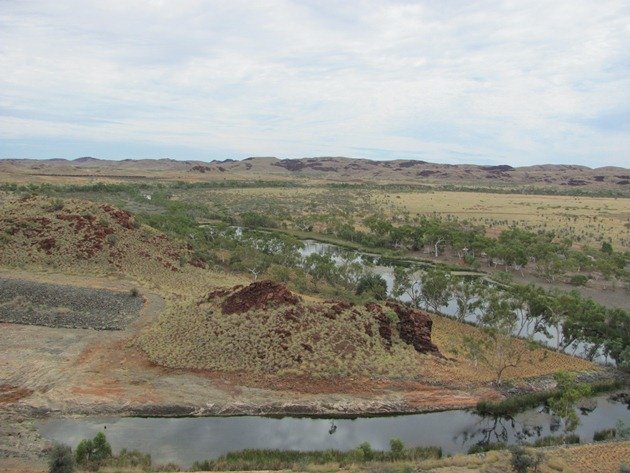
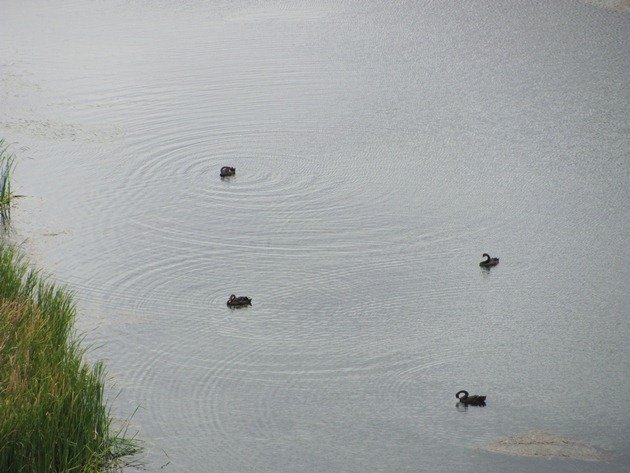
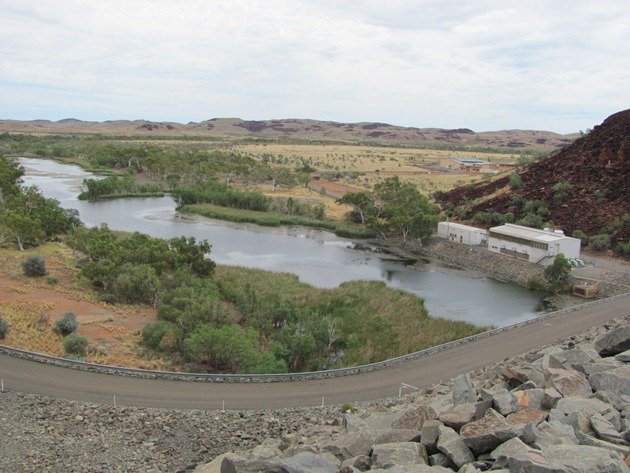
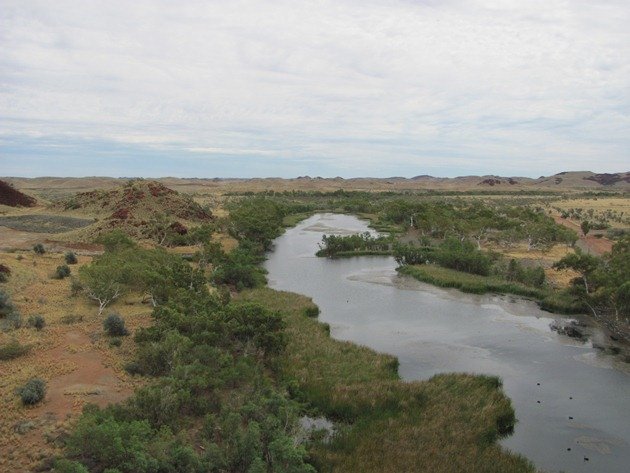
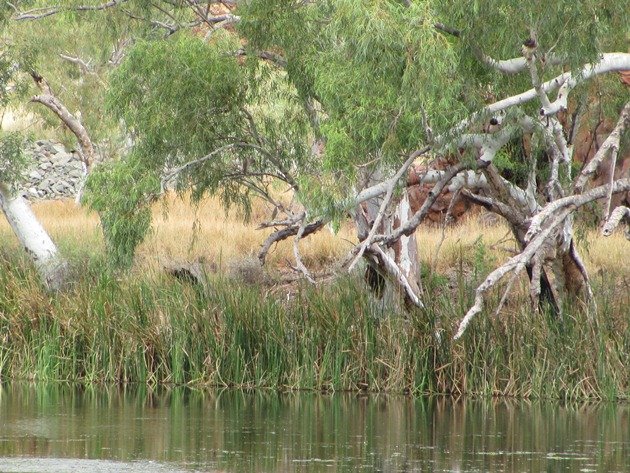
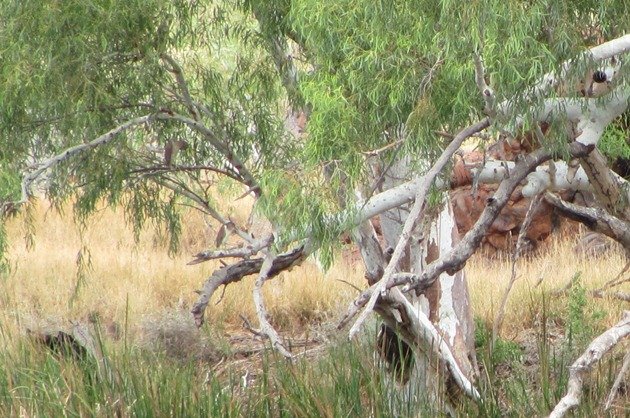










It looks like a beautiful area, and a surprising amount of water for what seems to be a very dry area. The Black Swans must have been lovely!
Yes, Wendy, it really is a very dry area and without cyclones and tropical lows each year bringing rain there would be no water. It is surprising what can survive on early morning moisture, though.
Ha! One of the Little Black Cormorants is an Oriental Darter. I had the pleasure of sorting out these two in Jakarta just last Saturday. Aaaaand I saw a Javan Spitting Cobra! Hurrah for deadly critters and cool birds!!
I am so jealous about your Rainbow Bee-eaters. And again, that is a lovely, lovely post, Clare.
Cheers!
Well, an Australasian Darter I presume…
You saw a SNAKE!!! Not in captivity? Well done! Yes, there is an Australasian Darter on the sticks-good to know you are observant! 🙂